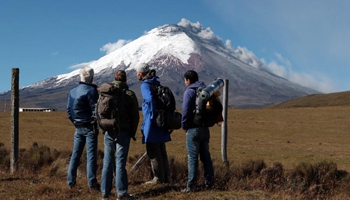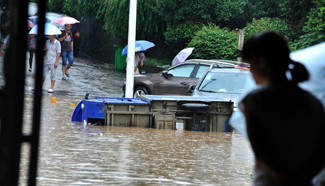WASHINGTON, June 15 (Xinhua) -- U.S. space agency NASA said Wednesday it has successfully lighted the largest-ever man-made fire on an unmanned cargo ship for a microgravity experiment designed to study how fire spreads in space.
The experiment, called Spacecraft Fire Experiment, or Saffire I, took place on Tuesday inside the Orbital ATK Cygnus cargo vehicle, hours after it departed from the International Space Station.
NASA has planned three such space fire experiments, deemed critical to the safety of astronauts who live and work in space, as it prepares for long duration missions on the journey to Mars.
"The first of our planned three Saffire experiments operated as designed," Gary Ruff, NASA's Spacecraft Fire Safety Demonstration Project manager, said in a statement.
"The success of this experiment opens the door to future large combustion experiments in the microgravity environment and directly supports the development of technologies and materials that will make deep space exploration spacecraft safer."
The experiment was conducted in a three-by-three-by-five-foot (0.9-by-0.9-by-1.5-meter) module after Cygnus was maneuvered to a safe distance from the space station.
Engineers from NASA's Glenn Research Center and U.S. space firm Orbital ATK remotely set fire to the sample, which is a cotton-fiberglass material blend 0.4 meter wide by one meter long.
Images and data captured from inside the module will be transmitted to Orbital ATK and relayed to Glenn over a period of up to eight days prior to Cygnus' destructive reentry to Earth on June 22.
Two more space fire experiments, Saffire-II and Saffire-III, are planned for later this year. Saffire-II will assess oxygen flammability limits using samples that are 2 inches (5 cm) wide and 12 inches (30 cm) long, while Saffire-III will assess a second large-scale microgravity fire.










